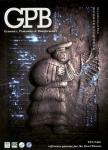Up-regulation of Long Non-coding RNA TUG1 in Hibernating Thirteen-lined Ground Squirrels
Up-regulation of Long Non-coding RNA TUG1 in Hibernating Thirteen-lined Ground Squirrels作者机构:Department of Chemistry and Biochemistry Faculty of Sciences Universite'de Moncton
出 版 物:《Genomics, Proteomics & Bioinformatics》 (基因组蛋白质组与生物信息学报(英文版))
年 卷 期:2016年第14卷第2期
页 面:113-118页
核心收录:
学科分类:0710[理学-生物学] 07[理学] 0905[农学-畜牧学] 09[农学] 071007[理学-遗传学] 090501[农学-动物遗传育种与繁殖]
主 题:Hibernation Hypometabolism Cold adaptation Non-codiag RNAs lncRNAs
摘 要:Mammalian hibernation is associated with multiple physiological, biochemical, and molecular changes that allow animals to endure colder temperatures. We hypothesize that long non-coding RNAs(lnc RNAs), a group of non-coding transcripts with diverse functions, are differentially expressed during hibernation. In this study, expression levels of lncRNAs H19 and TUG1 were assessed via qRT-PCR in liver, heart, and skeletal muscle tissues of the hibernating thirteen-lined ground squirrels(Ictidomys tridecemlineatus). TUG1 transcript levels were significantly elevated 1.94-fold in skeletal muscle of hibernating animals when compared with euthermic animals. Furthermore, transcript levels of HSF2 also increased 2.44-fold in the skeletal muscle in hibernating animals. HSF2 encodes a transcription factor that can be negatively regulated by TUG1 levels and that influences heat shock protein expression. Thus, these observations support the differential expression of the TUG1-HSF2 axis during hibernation. To our knowledge, this study provides the first evidence for differential expression of lnc RNAs in torpid ground squirrels, adding lnc RNAs as another group of transcripts modulated in this mammalian species during hibernation.



